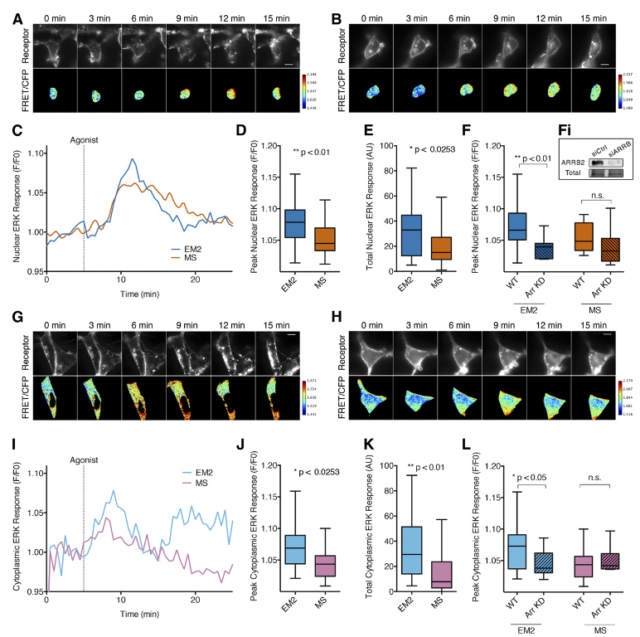Functional selectivity at the µ opioid receptor (µR), a prototypical G-protein–coupled receptor that is a physiologically relevant target for endogenous opioid neurotransmitters and analgesics, has been a major focus for drug discovery in the recent past. Functional selectivity is a cumulative effect of the magnitudes of individual signaling pathways, e.g., the Gαi-mediated and the arrestin-mediated pathways for µR. The present work tested the hypothesis that lifetimes of agonist-induced receptor-arrestin clusters at the cell surface control the magnitude of arrestin signaling, and therefore functional selectivity, at µR. We show that endomorphin-2 (EM2), an arrestin-biased ligand for µR, lengthens surface lifetimes of receptor-arrestin clusters significantly compared with morphine. The lengthening of lifetimes required two specific leucines on the C-terminal tail of µR. Mutation of these leucines to alanines decreased the magnitude of arrestin-mediated signaling by EM2 without affecting G-protein signaling, suggesting that lengthened endocytic lifetimes were required for arrestin-biased signaling by EM2. Lengthening surface lifetimes by pharmacologically slowing endocytosis was sufficient to increase arrestin-mediated signaling by both EM2 and the clinically relevant agonist morphine. Our findings show that distinct ligands can leverage specific sequence elements on µR to regulate receptor endocytic lifetimes and the magnitude of arrestin-mediated signaling, and implicate these sequences as important determinants of functional selectivity in the opioid system.

- Journal:
- Molecular Pharmacology
- Year:
- 2017
- PMICD:
- 28153854
- DOI:
- 10.1124/mol.116.106633

